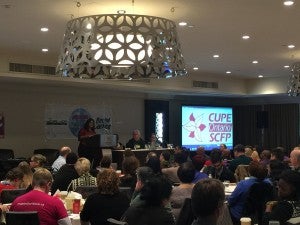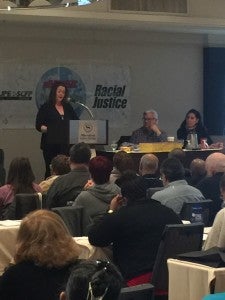If You Only Knew: Today’s Educational Assistant and Your Student
February 2, 2016
Today I met with two groups of Educational Assistants (EAs) wherein we addressed the same issue with both groups. There were about 80 people in the morning session and about 90 people in the afternoon session. Both sessions were about 2 hour’s duration. These EA’s work with high school students.
As per my approach to providing workshops, rather than waiting to the end for questions, I begin my workshop by asking what the attendees were grappling with and what they hoped I would address. After surveying their learning needs, I then provide information to address the identified issues.
I didn’t know I would be opening up a hornets’ nest today.
I was quickly and passionately informed as to the challenges the EA faces as the toe-to-toe support persons to students whose today’s difficulties often include violence, apathy, depression, anxiety and suicidal thought.
Gone are the days when the EA was more simply there to help the challenged learner with educational strategies to meet academic expectation. These folks are the front line to those students who might otherwise not even be granted admission to the educational facility if not for considerable attention.
In addition to the educational challenges posed by such difficult issues, the EAs also expressed dismay and upset for the context in which they provide service:
Limited to no prior background information about the assigned students;
Some students receiving EA services have considerable background issues and diagnosis where access to that information can facilitate the role of the EA. EAs are regularly told they cannot have access to that information leaving many feeling they are flying blind or trying to be supportive with one hand tied behind their back. While there are many reasons as to how or why this occurs, it may indeed be shortsighted from a student support perspective. It may also place the EA at risk of harm when a student with a propensity to violence is unidentified. In addition to being an educational issue, it may also be a health and safety issue.
Limited to no collaborative work with fellow EAs or other teaching staff assigned to the same students, but working in other classrooms;
EAs in the high school setting may work with several different students throughout the course of the day as the students rotate through their various classes. This also means that the same student, who is assigned the services of an EA, may be subject to the service of 4 or 5 different EAs throughout the day. If the EAs and teaching staff or special education staff do not conference together and form a unified educational plan and behavioural approach, then the likelihood of success may be diminished. EAs expressed a desire for greater collaboration to enable better coordinated educational and behavioural plans where all their input can be utilized to the benefit of the student.
Students who have extra funding for added support where the funding is being stretched to provide support to other students;
Several EAs reported that some students present with greater needs than others. In those situations additional funding may be directed specifically towards a single student. However, given other funding constraints, the funding directed to the single individual is at times used to support the needs of other students. This undermines the intent of funding the student who was requiring of this additional support.
Report writing or administrative duties without the infrastructure to carry out those duties;
Not uncommon in today’s world of increased accountability, reporting obligations have increased in many institutional setting. EAs report that while reporting obligations have increased, the time to meet those obligations has remained the same. This creates a conflict of time impossible for the EA to resolve. This creates an added layer of stress and anxiety as the EA seeks to be accountable and of service to students.
Given the above issues, EAs also reported feeling undervalued in their role and having no power to address those issues for fear of retribution by persons in administration. Many hold the view that they are treated as the poor cousin in the education system and can be overworked and their issues overlooked.
Please note, in reporting the above, I am reiterating information as presented and do not purport the issues identified to be as reported. Notwithstanding, there was clearly a consensus between two independent groups of EAs and across the approximately 170 in attendance overall.
What also seemed apparent was that many EAs were distressed given their desire to work comes from a place of loving the students and seeking to be as helpful as possible. If/when feeling thwarted in their duty, they feel not just undervalued but concerned that they are not meeting the needs of their students to the best degree possible. These scenarios are known to lead to poor job satisfaction, worker burnout and absenteeism. These are not trifling concerns.
I offered the EAs strategies to be heard and where their sense of value comes from their own action over the desired recognition and support of others. To that end I suggested:
Opening more channels of communication to those in administration;
Requesting administrative meetings;
Requesting to attend meetings where a student’s educational plan is discussed;
Advancing the profile of the profession by working with the mainstream media to inform others about their role and interests in the education system;
Utilizing social media to go directly to the public through their own existing pipelines with stories and information about their roles, trials and tribulations;
If/when informing the public or administration, to offer not only concerns, but to add to the dialogue by proposing solutions.
I don’t know if the public truly does understand or appreciate the role of the EA in today’s school. These are not glorified babysitters, there to pacify the child to simply get them through the day. Nor are the EAs the in-house security system to guard the would-be violent student and maintain the safety of other students.
The EA is the system the educational system has put in place to enable the challenged students’ participation in education, to facilitate learning, to in turn facilitate later autonomy, independence and social functioning. In fulfilling their role, the EA regularly is at risk of violent behaviour, is frequently attacked, spit upon, harassed and disrespected. That forms their day-to-day experience, all invisible to the general public.
This is an issue for all parents, not only those whose children receive the service of the EA. If all parents want a safe environment conducive for learning, then investment in the EA is a place to start. Investment is more than financial. It includes having institutional structures in place to facilitate the role. When we listen to those who have the job, it becomes easier to figure out what they need to do the job.
Today I listened and they were greatly appreciative.
Oh and as an aside, please don’t indulge your kids and please have them leave the cell phone at home. There are already enough attitudes and distractions to deal with.
I loved meeting with these two feisty groups.
I am Gary Direnfeld and I am a social worker.
https://garydirenfeld.files.wordpress.com/2013/07/gary-feb-12.jpg?w=200&h=301
Gary Direnfeld, MSW, RSW
gary@yoursocialworker.com
http://www.yoursocialworker.com
Gary Direnfeld is a social worker. Courts in Ontario, Canada, consider him an expert in social work, marital and family therapy, child development, parent-child relations and custody and access matters. Gary is the host of the TV reality show, Newlywed, Nearly Dead, parenting columnist for the Hamilton Spectator and author of Marriage Rescue: Overcoming the ten deadly sins in failing relationships. Gary maintains a private practice in Dundas Ontario, providing a range of services for people in distress. He speaks at conferences and workshops throughout North America.


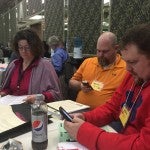
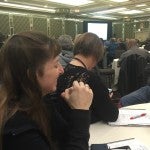










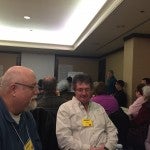
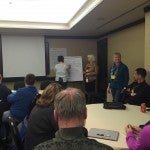


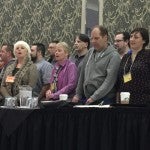






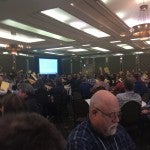

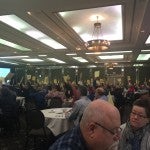
 Ontario Racial Justice and Human Rights 2016 conference, “Moving equality forward, from basics to leadership,” took place in Toronto January 25-28, 2016. This was an information packed event which talked about a variety of topics including Aboriginal education, union development, challenging diversity and diversity and inclusion in the workplace to name a few.
Ontario Racial Justice and Human Rights 2016 conference, “Moving equality forward, from basics to leadership,” took place in Toronto January 25-28, 2016. This was an information packed event which talked about a variety of topics including Aboriginal education, union development, challenging diversity and diversity and inclusion in the workplace to name a few.